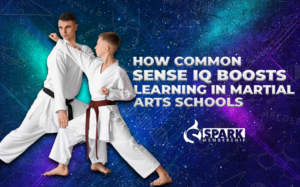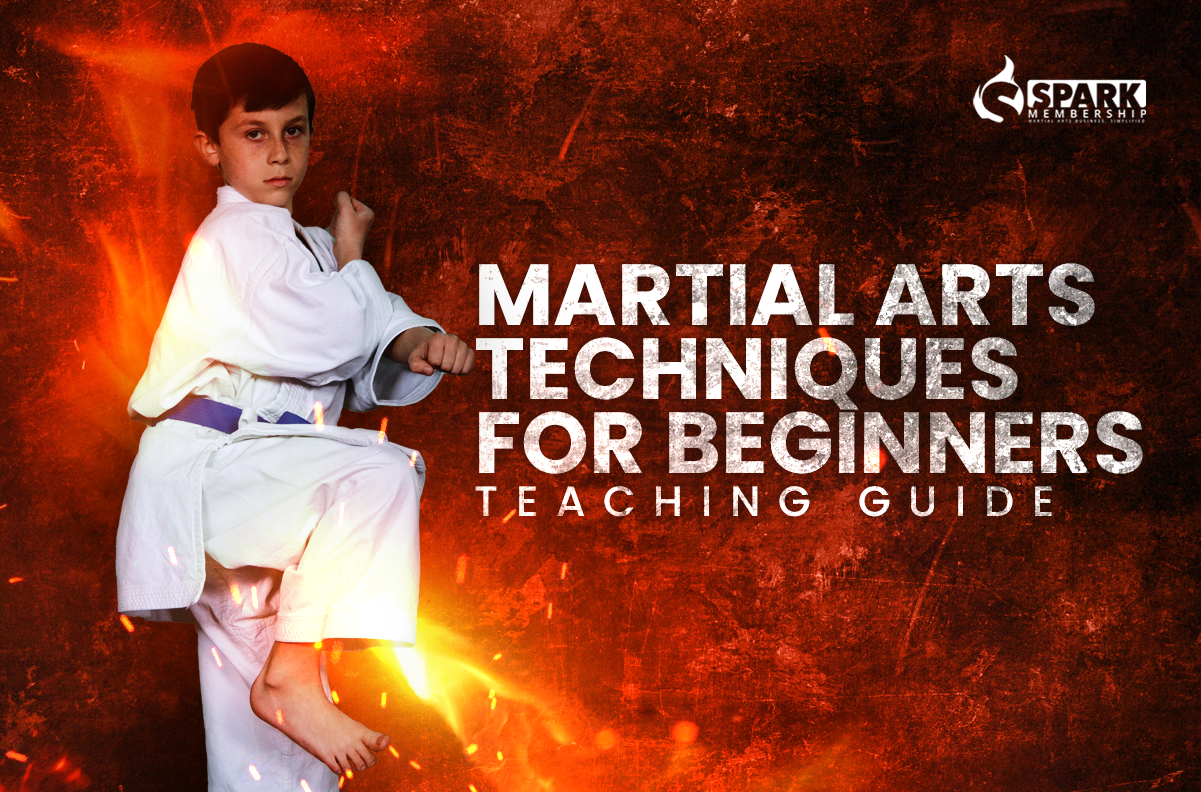
Starting off with beginners in martial arts is quite the adventure, and let’s be honest, it’s a big responsibility too. As their first instructor, we’re not just opening the gym doors; we’re welcoming them into a whole new world. It’s crucial that we equip them properly from day one. This journey is more than just learning the moves; it’s about embedding a sense of discipline, respect, and a deep-seated passion for martial arts. Our mission? To set them up for success and keep that drive alive. Let’s ensure their first steps on this path are both solid and inspiring.
Understanding Martial Techniques
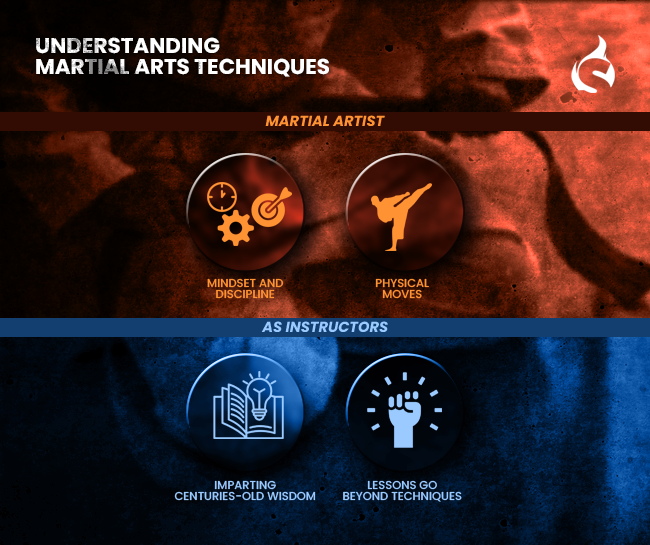
Exploring martial arts techniques reveals the true essence of martial arts, which is about much more than just the moves. It’s a comprehensive process that shapes the entire martial artist:
- Mindset and Discipline: Key to building the mental and emotional resilience that defines a martial artist.
- Physical Moves: Essential components like punches, kicks, and blocks are crucial but represent only a part of the journey.
This path is enriched by tradition and wisdom, transforming teaching into a means of passing down a legacy. As instructors:
- We’re not just teaching forms; we’re imparting centuries-old wisdom.
- Our lessons go beyond techniques, fostering transformative experiences that help students discover their resilience and power.
💡 By embracing this approach, we ensure that martial arts remain a rich and profound tradition, guiding students toward not only mastering the art but also achieving personal growth.
Key Martial Arts Techniques for Beginners
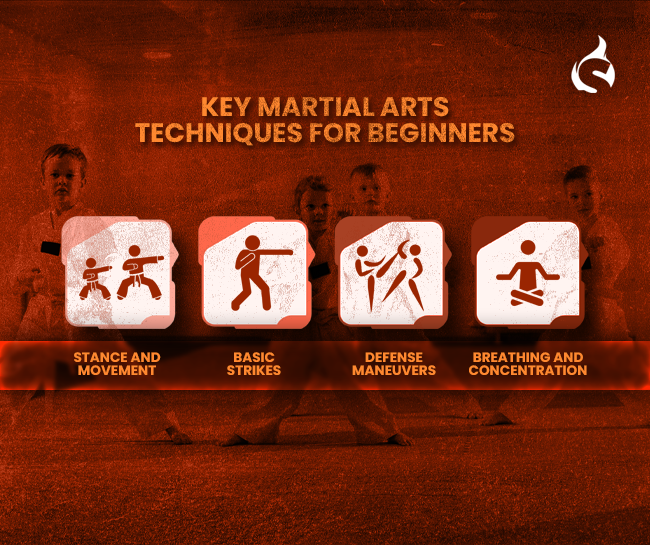
Embark on a journey through the essential techniques that lay the groundwork for all beginners in the vibrant and challenging world of martial arts.
Stance and Movement
Balance and positioning form the foundation of all martial arts techniques. A proper stance ensures stability and readiness, while fluid movement allows for efficient defense and attack. Instructors should emphasize the role of footwork in maintaining balance and enabling swift, controlled movements.
Basic Strikes
Introducing beginners to punches, kicks, and blocks is a step towards mastering offensive and defensive strategies. These basic strikes are the building blocks of more complex combinations and techniques. Instructors should focus on proper form, timing, and the application of force.
Defense Maneuvers
Teaching beginners how to evade and counter attacks is essential for their development in martial arts. These maneuvers not only enhance their defensive capabilities but also prepare them for more advanced techniques. The emphasis should be on anticipation, reaction speed, and the efficient use of leverage.
Breathing and Concentration Techniques
Martial arts training is as much a mental endeavor as it is physical. Breathing and concentration techniques are vital for enhancing endurance, focus, and the ability to remain calm under pressure. Instructors should incorporate these practices into their lessons to help students develop a holistic approach to martial arts.
💡 You need to understand these techniques to ensure effective instruction, student retention, and the overall success of their schools.
Teaching Strategies for Martial Arts Instructors
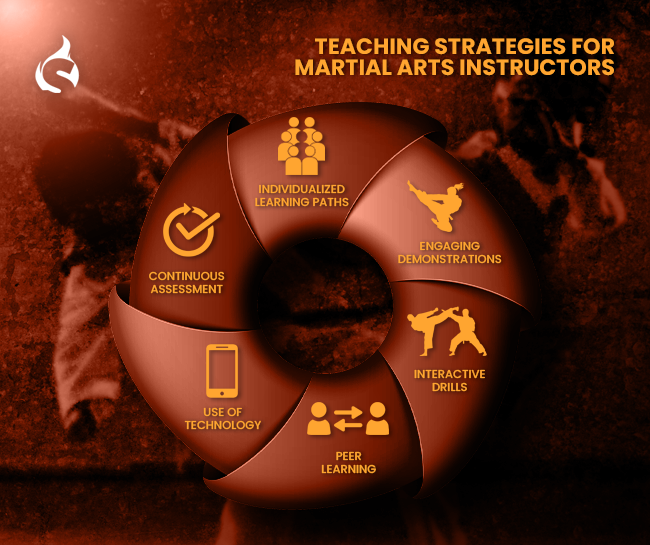
Discover innovative teaching strategies that empower martial arts instructors to unlock their students’ full potential, fostering a dynamic and effective learning environment.
- Individualized Learning Paths: Tailor instruction to meet the unique needs and progress of each student.
- Engaging Demonstrations: Utilize compelling demonstrations to illustrate techniques vividly.
- Interactive Drills: Incorporate drills that encourage active participation and real-time feedback.
- Peer Learning: Facilitate sessions where students learn from each other, enhancing camaraderie and skill acquisition.
- Use of Technology: Leverage digital tools and apps for supplementary learning and technique refinement.
- Continuous Assessment: Implement regular assessments to monitor progress and adjust teaching methods accordingly.
Creating an Engaging Learning Environment
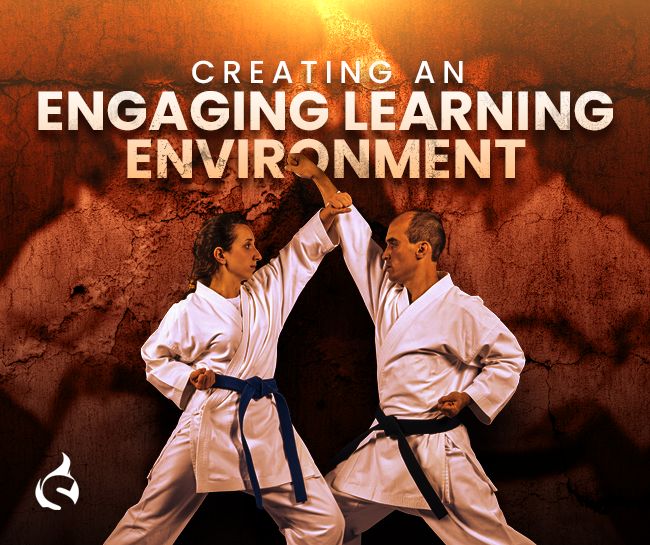
A positive and supportive classroom atmosphere is crucial for student retention and satisfaction. Encouraging feedback, participation, and fostering a sense of community can make the martial arts journey more enjoyable and rewarding for beginners. Instructors play a pivotal role in shaping this environment, and their enthusiasm and dedication can inspire students to achieve their best.
So, there you have it, our go-to guide for teaching the next generation of martial artists. It’s all about laying down those essential skills and mixing in a bit of creativity with how we teach. As instructors, our goal is to light that spark in our beginners, guiding them through their first steps with confidence and a sense of adventure. Keep pushing the boundaries, stay curious, and let’s make every class an opportunity for our students to grow and shine in the martial arts world.
Ready to elevate your martial arts instruction? Dive into our blog, “Essential Training Strategies for Martial Arts School Instructors,” to discover key techniques and innovative teaching methods. Plus, simplify operations with Spark Membership Software. Let’s unlock the full potential of your school together.


